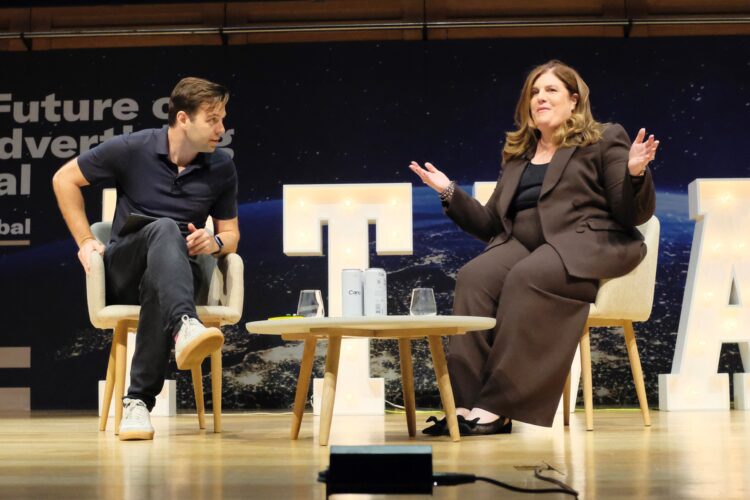Disney global ads president: expect streaming consolidation


“I think you’ll start to see [consolidation] in the next 12-24 months pretty aggressively.”
Rita Ferro, Disney’s president of global advertising, told an audience at The Future of TV Advertising Global in London to expect the TV streaming market to look quite different in two years’ time.
When asked whether the streaming market can accommodate the current number of competitors, Ferro offered: “Ultimately, you’re going to see more consolidation, because there’s no way that all of these players will continue to exist without multiple revenue streams.”
Speaking to Justin Lebbon, director of Adwanted Events, Ferro gave a positive portrayal of Disney’s own streaming business. “We’re having a really good end of the year,” she said. “I think it’s been a challenging year overall, but I think from an overall business perspective we’re really in a good place, anchored really in sports and streaming.”
Reflecting on the launch of Disney+’s ad tier one year on, Ferro said the rollout has “gone extremely well.” She boasted that Disney+ now has 1,000 advertisers globally. She added that half of new Disney+ subscribers are signing up for its ad tier in the US market.
Users have responded positively to the ad tier, she explained, in part because Disney has been careful in making sure the service has the “right ad load, the right ad experience, and the right ad policy.”
As opposed to the likes of Netflix, which has attempted to build an ad platform from the ground up, Ferro said Disney was advantaged because of its ownership of Hulu, which has had ads since it launched in 2007. That meant Disney already had access to a full advertising tech stack, which has been repurposed for Disney+.
The longer history of working with advertising has also been a boost for content. Like other streaming companies introducing ad tiers, Disney limits its ad load to roughly four minutes per hour, and places them in films and TV shows that were not designed around ad breaks.
The latter point has prompted criticism from users who say the inclusion of ads, even in smaller loads, are highly disruptive to the viewing experience.
“It’s a minefield,” said Lebbon.
Ferro agreed. She addressed such concerns, revealing that Disney’s content teams are “involved” in discussions around where ad breaks should be placed in given shows and films.
Further, according to Ferro Disney also uses metadata from natural ad breaks of its content on broadcast channels, which have been running advertising against Disney films and shows for decades.
“We’re very careful about the advertising experience,” assured Ferro. But for advertisers, she added, between Hulu, ESPN+, and Disney+, Disney can offer scale on streaming despite the lower ad loads as compared to linear.
Linear is still important to Disney’s business; 50% of its TV revenue still comes from linear. According to recent analysis from GroupM, however, streaming revenues will soon surpass linear for TV companies as they continue to attain paid subscribers and begin to earn more ad revenue from expanded ad tiers.
Ferro admitted the opportunity in streaming is “pulling opportunity away from linear,” but that linear is “still absolutely relevant” for Disney and for advertisers, especially for its ability to draw audiences for sports and other live events.
Keeping streaming’s ascendency in mind, advertisers should still see opportunities in both linear and streaming, said Ferro, because advertising against both offers deduplicated incremental reach.
Ferro briefly touched on a number of key areas where Disney will look to expand its streaming capability.
“We’re spending a lot of time now around gamification, shopification, [and] how social gets integrated into the broader user experience,” she said, coyly hinting at announcements likely to be made next month at CES in Las Vegas.
The TV viewing experience can be enhanced, Ferro hinted, by baking the capacity for audiences to make purchases and interact with social conversation directly into the user experience.
